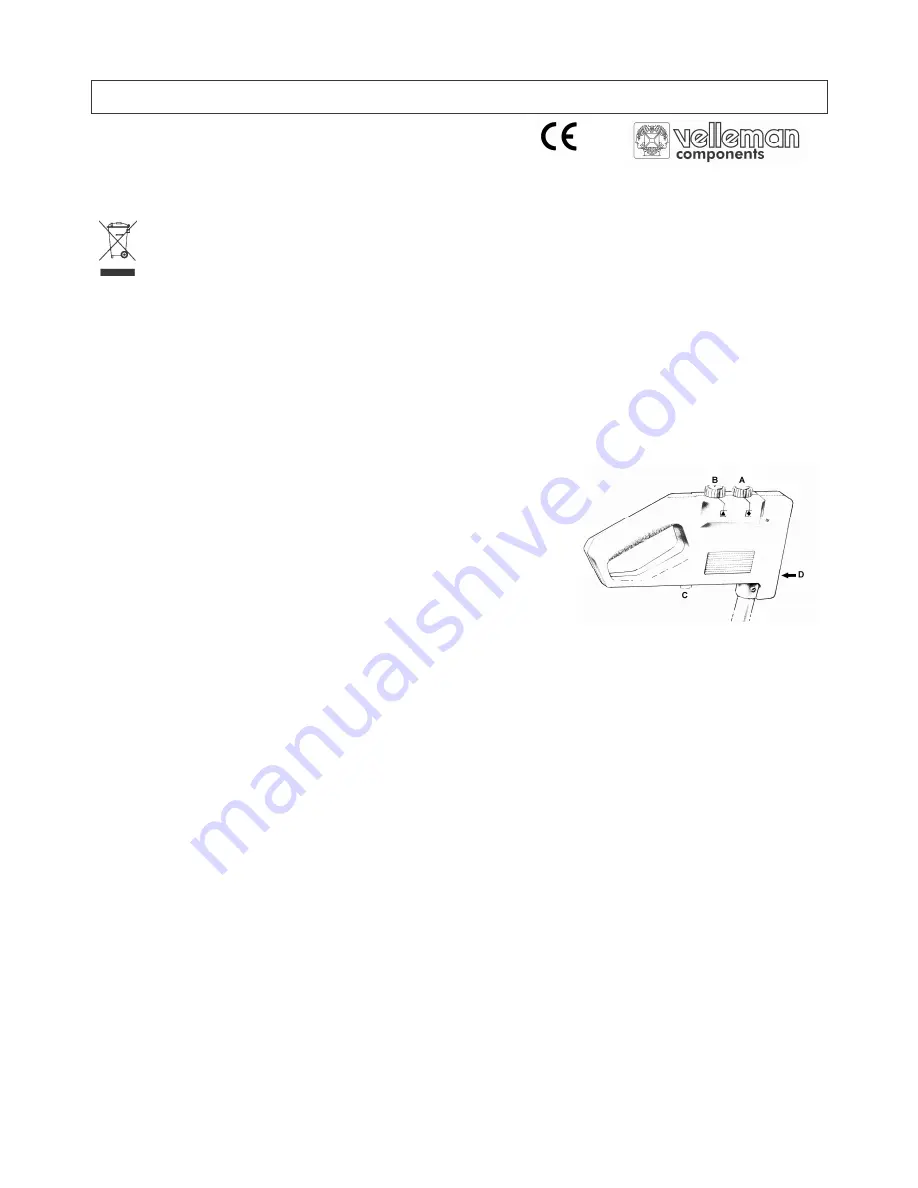
CS220
VELLEMAN
1
CS220 – METAL DETECTOR
1. Introduction
To all residents of the European Union
Important environmental information about this product
This symbol on the device or the package indicates that disposal of the device after its lifecycle could harm the environment.
Do not dispose of the unit (or batteries) as unsorted municipal waste; it should be taken to a specialised company for recycling.
This device should be returned to your distributor or to a local recycling service.
Respect the local environmental rules.
If in doubt, contact your local waste disposal authorities.
2. Assembly and batteries
Thank you for buying the CS220 metal detector. Read this manual carefully before bringing the device into service.
To assemble your detector, simply insert the lower stem into the upper stem and select the most suitable height
position for the user.
Before testing your detector it is necessary to insert two 9V DC batteries. They will last for approximately 40 hours of
use depending on how long the detector is used each time and whether headphones are used. When the unit is not
in use, it is important to make sure the detector is switched off, or battery
drain will result. As the batteries get weaker, the volume will deteriorate. To
insert batteries, remove the battery cover panel (D), attach the two 9V DC
batteries to the connectors, insert them in the space provided and refit the
cover.
3. Controls
A: ON/OFF + FINE TUNING control
(diamond mark)
B: MAIN TUNING control
(triangle mark)
Before commencing an actual search, it is advisable for the user to understand the controls and their function. It is
also important to test for the kind of signals the detector will give in use. The best way to do this is to tune the
detector indoors by laying the detector over the edge of a table with the head hanging over the edge. Make sure
there is no metal within a few feet of the head.
The CS220 detector is designed to change its volume when the search head is passed over metal. To tune the
detector, first switch the unit on at the ON/OFF switch. Then turn the MAIN TUNING control clockwise until a tone
can just be heard. Then turn this same control back until the tone just fades. You can then set the correct tuning level
with the FINE TUNING control. The best setting is a level where the sound can just be heard. If the detector is
operated on a silent setting or when a tone is heard all the time, sensitivity will be lost.
4. Headphones socket (C)
Normal stereo headphones with a 6.35mm plug may be used.
5. Detection
To test for the type of signal you will get, take a coin or metal object and with the detector still on a table, tuned as
previously described, move the metal object towards and across the search head. You will note that the volume will
increase quickly as the metal object passes across the search head, with the loudest sound occurring when the
search head is immediately centred over the metal object.
















